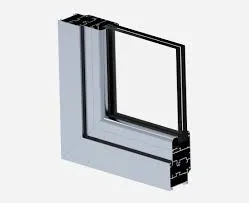Cast Iron Collars and Bushings for Enhanced Durability and Performance in Mechanical Applications
The Importance of Cast Iron Collars and Bushings in Mechanical Applications
In the realm of mechanical engineering and design, components like collars and bushings play pivotal roles in ensuring the smooth functioning of machines. Among the various materials available, cast iron has emerged as a preferred choice for crafting these essential parts due to its unique properties, durability, and versatility. This article delves into the significance of cast iron collars and bushings, exploring their applications, benefits, and considerations.
Understanding Cast Iron Collars and Bushings
Collars and bushings are cylindrical components used as spacers, bearings, or guides in various mechanical systems. Cast iron, an iron-carbon alloy with a high carbon content, is known for its excellent casting properties, making it suitable for producing complex shapes with high precision. Cast iron collars are typically used to provide support and alignment for rotating shafts, while bushings serve as protective spacers or bearings that reduce friction between moving parts.
Advantages of Cast Iron
1. Durability and Strength One of the primary advantages of cast iron is its superior strength and durability. Cast iron can withstand significant mechanical stress, making it ideal for heavy-duty applications where reliability is crucial. Its ability to absorb vibration also contributes to the longevity of machinery.
2. Wear Resistance Cast iron exhibits excellent wear resistance, an essential property for components that experience friction over time. The material can maintain its integrity and performance even after prolonged exposure to abrasive environments.
3. Castability The casting process allows for the fabrication of intricate designs and geometries that would be challenging to achieve with other materials. This flexibility enables designers to create tailored solutions that meet specific operational needs.
4. Thermal Conductivity Cast iron has good thermal conductivity, aiding in heat dissipation. This property is particularly beneficial in applications where friction-generated heat can compromise integrity or performance.
Applications of Cast Iron Collars and Bushings
cast iron collar and bushings

Cast iron collars and bushings find extensive use across several industries
- Manufacturing Machinery In factories, cast iron collars support rotating shafts in machines and provide stability during operation. Bushings in these machines help mitigate friction between moving parts, allowing for smoother operations.
- Construction Equipment Heavy construction machinery often employs cast iron components due to their ability to withstand harsh conditions and heavy loads. Collars and bushings in hydraulic systems enhance reliability and effectiveness.
- Automotive Engineering In the automotive sector, cast iron bushings are used in suspension systems, helping to reduce noise and vibration while providing a stable ride.
- Railway Systems Collars and bushings made from cast iron are integral to railway systems, ensuring the smooth operation of trains by stabilizing track systems and reducing wear on wheels.
Considerations and Challenges
While cast iron offers numerous benefits, certain challenges may arise. For instance, its brittleness can lead to fractures under extreme conditions or if subjected to sharp impacts. Therefore, careful consideration of operational environments and mechanical loads is essential during the design phase. Additionally, the weight of cast iron components should be factored in when considering the overall design and efficiency of the machinery.
Conclusion
Cast iron collars and bushings are indispensable components in various mechanical systems. Their unique properties—including durability, wear resistance, and ease of manufacturing—make them ideal for applications across industries. As technology progresses, further innovations in materials and design may enhance the functionality and efficiency of these crucial parts. Understanding the benefits and limitations of cast iron is vital for engineers and designers aiming to create robust and reliable machinery. By leveraging the strengths of cast iron, industries can continue to improve the performance and longevity of their mechanical systems, ultimately leading to greater operational success.
-
Wrought Iron Components: Timeless Elegance and Structural StrengthNewsJul.28,2025
-
Window Hardware Essentials: Rollers, Handles, and Locking SolutionsNewsJul.28,2025
-
Small Agricultural Processing Machines: Corn Threshers, Cassava Chippers, Grain Peelers & Chaff CuttersNewsJul.28,2025
-
Sliding Rollers: Smooth, Silent, and Built to LastNewsJul.28,2025
-
Cast Iron Stoves: Timeless Heating with Modern EfficiencyNewsJul.28,2025
-
Cast Iron Pipe and Fitting: Durable, Fire-Resistant Solutions for Plumbing and DrainageNewsJul.28,2025
-
 Wrought Iron Components: Timeless Elegance and Structural StrengthJul-28-2025Wrought Iron Components: Timeless Elegance and Structural Strength
Wrought Iron Components: Timeless Elegance and Structural StrengthJul-28-2025Wrought Iron Components: Timeless Elegance and Structural Strength -
 Window Hardware Essentials: Rollers, Handles, and Locking SolutionsJul-28-2025Window Hardware Essentials: Rollers, Handles, and Locking Solutions
Window Hardware Essentials: Rollers, Handles, and Locking SolutionsJul-28-2025Window Hardware Essentials: Rollers, Handles, and Locking Solutions -
 Small Agricultural Processing Machines: Corn Threshers, Cassava Chippers, Grain Peelers & Chaff CuttersJul-28-2025Small Agricultural Processing Machines: Corn Threshers, Cassava Chippers, Grain Peelers & Chaff Cutters
Small Agricultural Processing Machines: Corn Threshers, Cassava Chippers, Grain Peelers & Chaff CuttersJul-28-2025Small Agricultural Processing Machines: Corn Threshers, Cassava Chippers, Grain Peelers & Chaff Cutters












